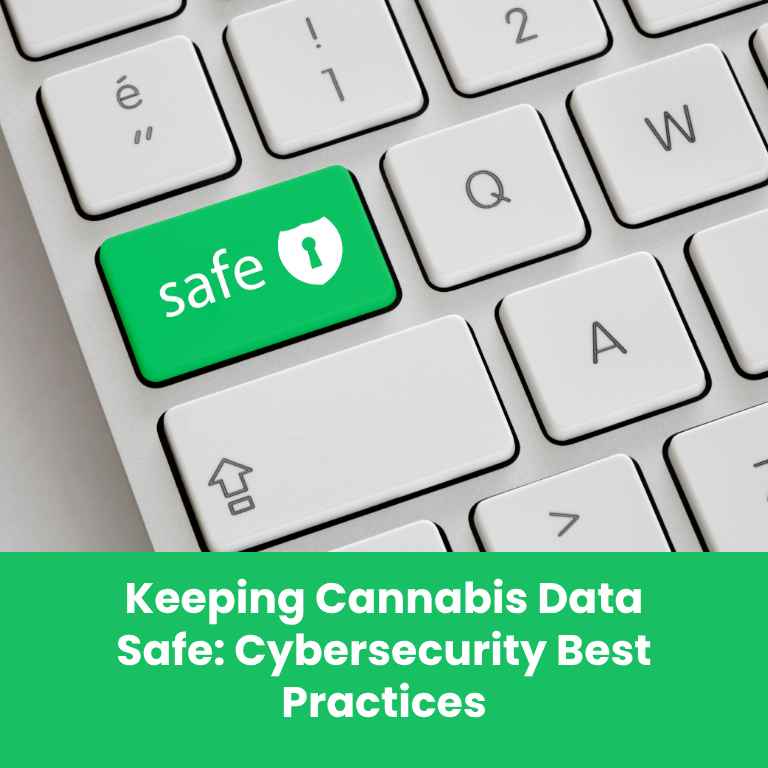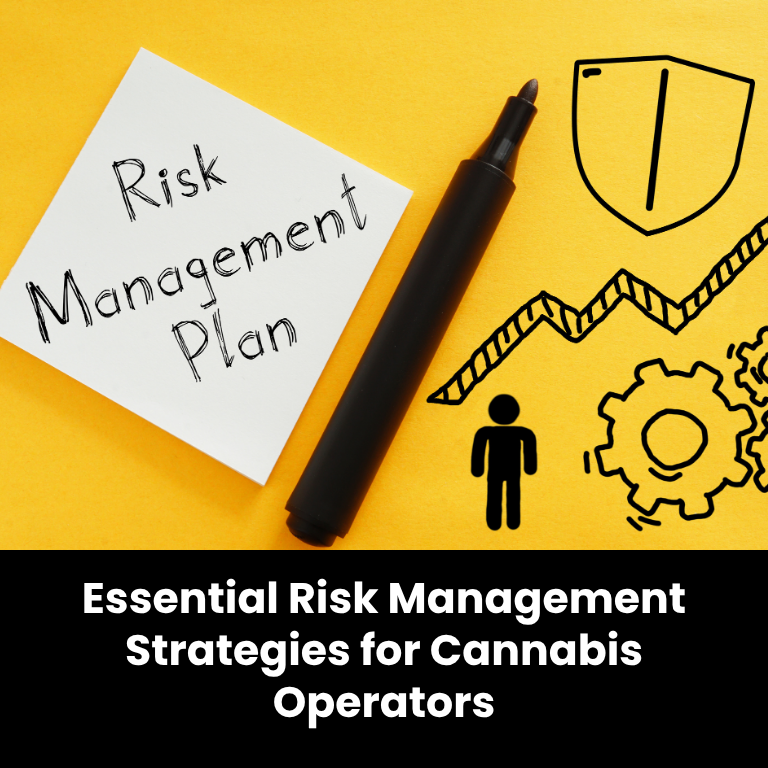How Cannabis Insurance Premiums Are Calculated: A Deep Dive into Risk, Coverage, and Business Specific Factors
As the legal cannabis industry continues to expand, business owners are becoming increasingly aware of the importance of insurance. However, one of the first questions asked by new operators entering the space is:
“How much will cannabis insurance cost, and how are premiums determined?”
Unlike more conventional industries, cannabis businesses operate in a high-risk environment. This impacts how insurers assess applications and calculate premiums. While cannabis insurance is now more widely available, pricing is often higher and more nuanced due to regulatory uncertainty, property risk, product liability exposure, and other unique industry challenges.
In this article, we break down the key variables that influence how premiums for cannabis insurance are calculated, so you can better understand what to expect and how to plan.
The Type of Cannabis Business You Operate Is One of the Most Important Premium Factors
The nature of your cannabis business has a significant impact on how insurers assess your risk level and set your premium. Different operations present vastly different exposures.
Here’s how various business types affect premiums:
- Dispensaries face high public interaction, theft potential, and general liability concerns.
- Cultivation sites carry crop risk, property exposure, and environmental threats.
- Manufacturers and processors have heightened product liability risks and equipment concerns.
- Distributors and delivery services introduce vehicle and cargo exposure.
- Ancillary businesses (e.g., cannabis tech or packaging providers) tend to have lower premiums due to indirect plant contact.
The more complex and high-risk your operations are, the more coverage you’ll likely need—and the higher your premium may be.
Business Location and State Regulations Significantly Influence Insurance Pricing
Where your cannabis business operates affects premiums in multiple ways. Cannabis is regulated at the state level, and some regions are more stringent than others.
Premiums are influenced by:
- State licensing requirements (some states require minimum insurance limits)
- Crime rates and theft statistics in your zip code
- Natural disaster risks (e.g., flood zones, wildfire-prone areas)
- Proximity to emergency services, such as fire or police departments
For instance, a dispensary in a major urban area with high crime rates may pay significantly more than a rural shop in a secure location.
Security Measures Can Help Reduce Insurance Premiums by Lowering Risk
Insurers reward cannabis businesses that demonstrate strong risk mitigation strategies, especially in an industry where theft, burglary, and compliance violations are common.
Implementing the following can reduce your premium:
- 24/7 security monitoring
- Surveillance cameras with cloud backup
- Secure safes and vaults for product storage
- Alarm systems and entry control systems
- Employee background checks and security training
Some insurance providers offer discounts or premium reductions for cannabis businesses that go above and beyond state-mandated security protocols.
Coverage Limits and Policy Types Directly Affect Premium Costs
The more coverage you require, the higher your premium will be—it’s that simple. However, that doesn’t mean you should skimp on coverage. The key is to find the right balance between cost and protection.
Higher premiums come from:
- Higher coverage limits (e.g., $5M vs. $1M in liability)
- Broader policy types, such as bundling general, property, product liability, cyber, crop, and business interruption insurance
- Lower deductibles, which increase the insurer’s exposure
Discussing your specific needs with a cannabis-savvy broker can help you tailor your coverage to fit your budget without leaving critical gaps.
Your Business’s Revenue and Size Also Affect Premium Pricing
Premiums are often scaled based on revenue, number of employees, and square footage of the facility. This is because larger businesses typically face:
- Higher exposure to liability risks
- More customer or vendor interaction
- Larger inventories or more expensive property
Examples:
- A small grower with five employees and $500K in revenue may pay $5K/year.
- A multi-site dispensary chain generating $5M+ annually could easily see premiums exceeding $50K/year depending on coverage levels.
Past Insurance Claims and Legal History Impact How Insurers Assess Your Risk
Just like in auto or health insurance, a history of frequent or large claims will raise red flags for underwriters.
This includes:
- Past property claims (e.g., fire or theft)
- Lawsuits related to product safety or customer injury
- Regulatory violations or licensing issues
- Employee-related complaints or settlements
Cannabis insurers assess whether your business is accident-prone, negligent, or high-risk. Clean legal and claims histories usually help you qualify for better rates.
Industry Experience and Business Maturity May Reduce Your Premium Over Time
New businesses with inexperienced teams often pay more because of unproven operational controls and limited track records.
However, insurers look favorably on:
- Founders with cannabis, healthcare, or highly regulated industry backgrounds
- Robust SOPs (Standard Operating Procedures)
- Clean inspections and audits
- Consistent regulatory compliance
Over time, renewal rates may drop if your business remains incident-free and compliant.
Insurance Provider Type and Market Conditions Influence Premium Variability
Cannabis insurance is still an emerging market, and premiums are not as standardized as in other industries. Rates vary widely depending on:
- Which insurer or brokerage you choose
- Whether the carrier is admitted or non-admitted
- Competition among underwriters in your region
- Market-wide loss ratios or claims trends
Working with a specialist broker who shops multiple carriers can ensure you’re getting the best possible rate in this evolving market.
Common Cannabis Insurance Coverages and How They Contribute to Premiums
Here’s a breakdown of how specific policy types affect your cannabis insurance costs:
| Policy Type |
Risk Level |
Premium Impact |
| General Liability |
Medium |
Base policy, required |
| Product Liability |
High (edibles, vapes) |
Higher premiums |
| Property Insurance |
Medium-High |
Depends on building value |
| Crop Insurance |
High |
Specialized, costly |
| Workers’ Comp |
Medium |
Mandatory in most states |
| Cyber Liability |
Medium |
Growing importance |
| Business Interruption |
Medium |
Optional but valuable |
Bundling policies may help reduce overall costs but only if it fits your risk profile.
Understanding Premium Calculations Helps You Plan and Protect
Premiums for cannabis insurance are not calculated randomly—they’re a data-driven reflection of your business’s unique risk. While the industry still lacks uniformity, savvy operators who understand these variables can take proactive steps to improve their insurability and reduce premium costs over time.
To summarize, insurers calculate your cannabis insurance premiums based on:
- Type of business and operational risk
- Location, crime rates, and natural hazard exposure
- Level of security and safety measures
- Desired coverage limits and policy types
- Business size, revenue, and employee count
- Past claims and legal history
- Industry experience and compliance records
- Insurance market dynamics and provider choice
By staying informed, partnering with experienced brokers, and investing in risk mitigation, cannabis businesses can protect themselves effectively without overpaying.













